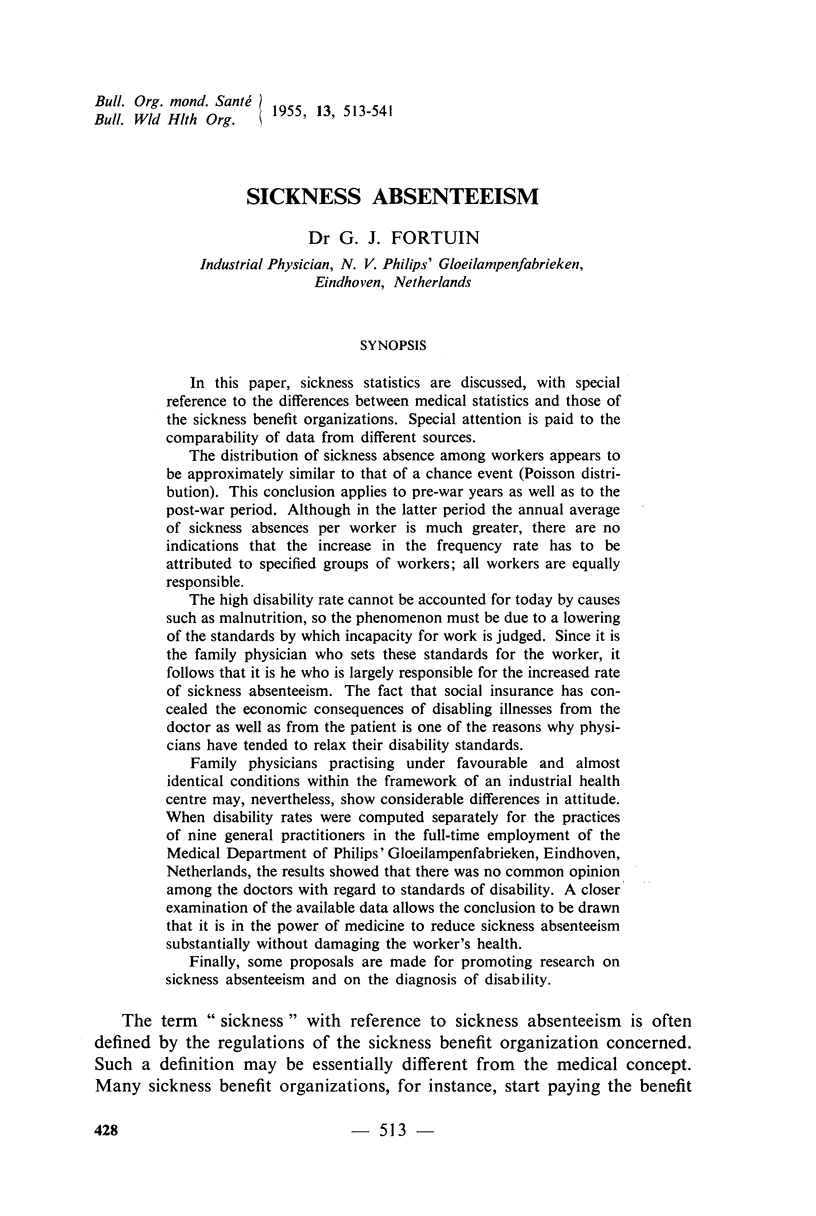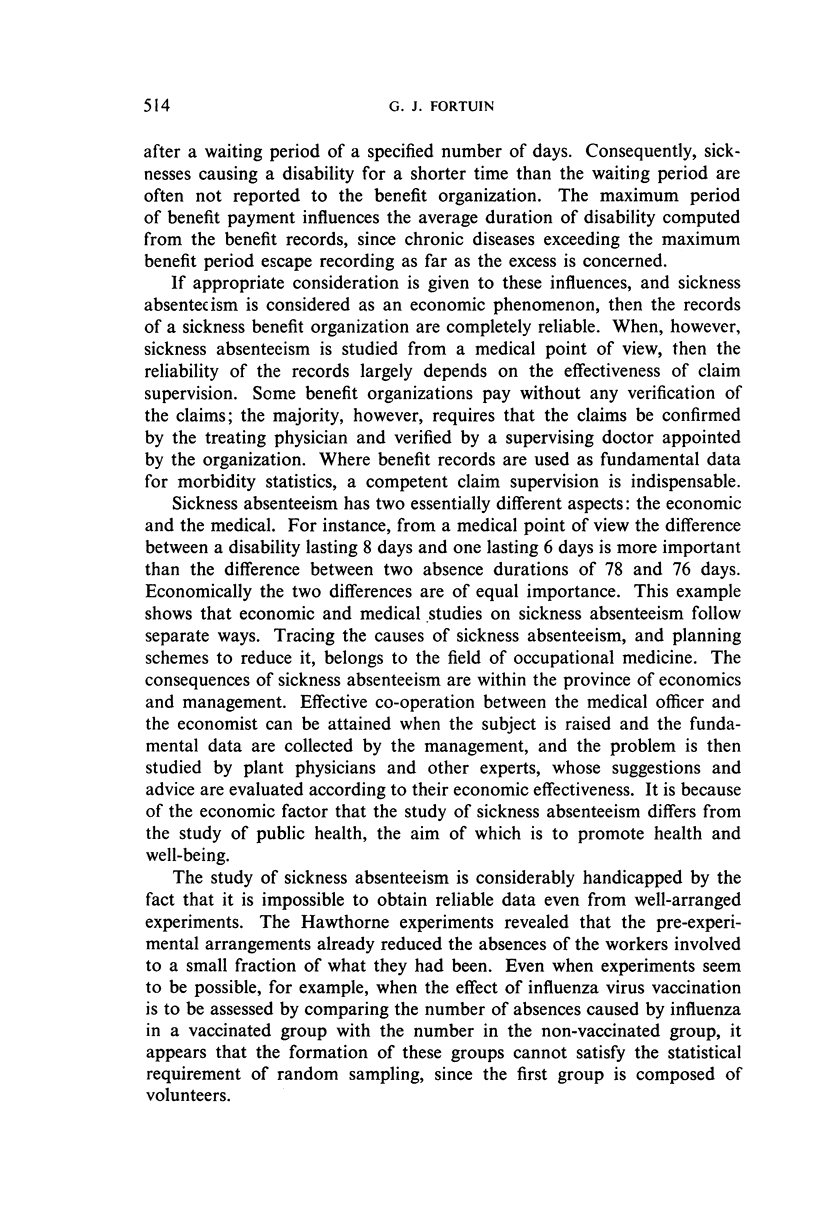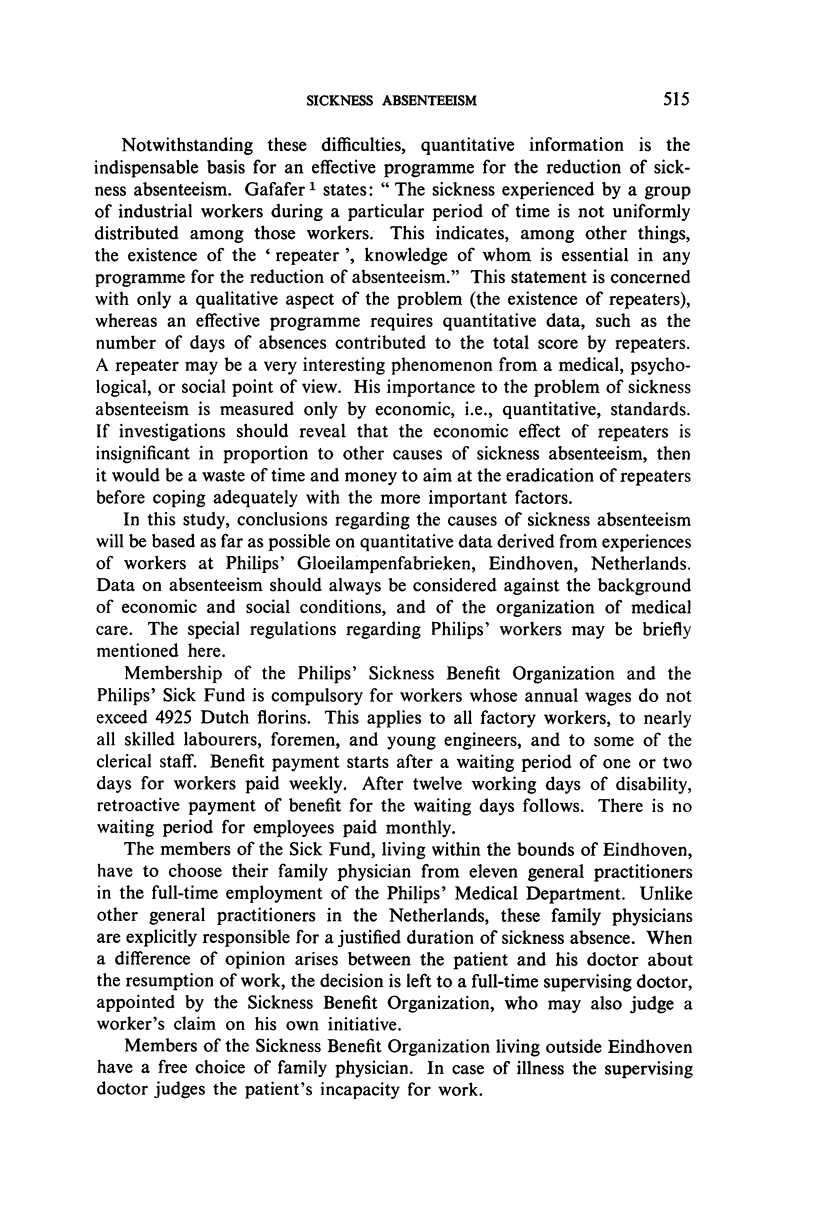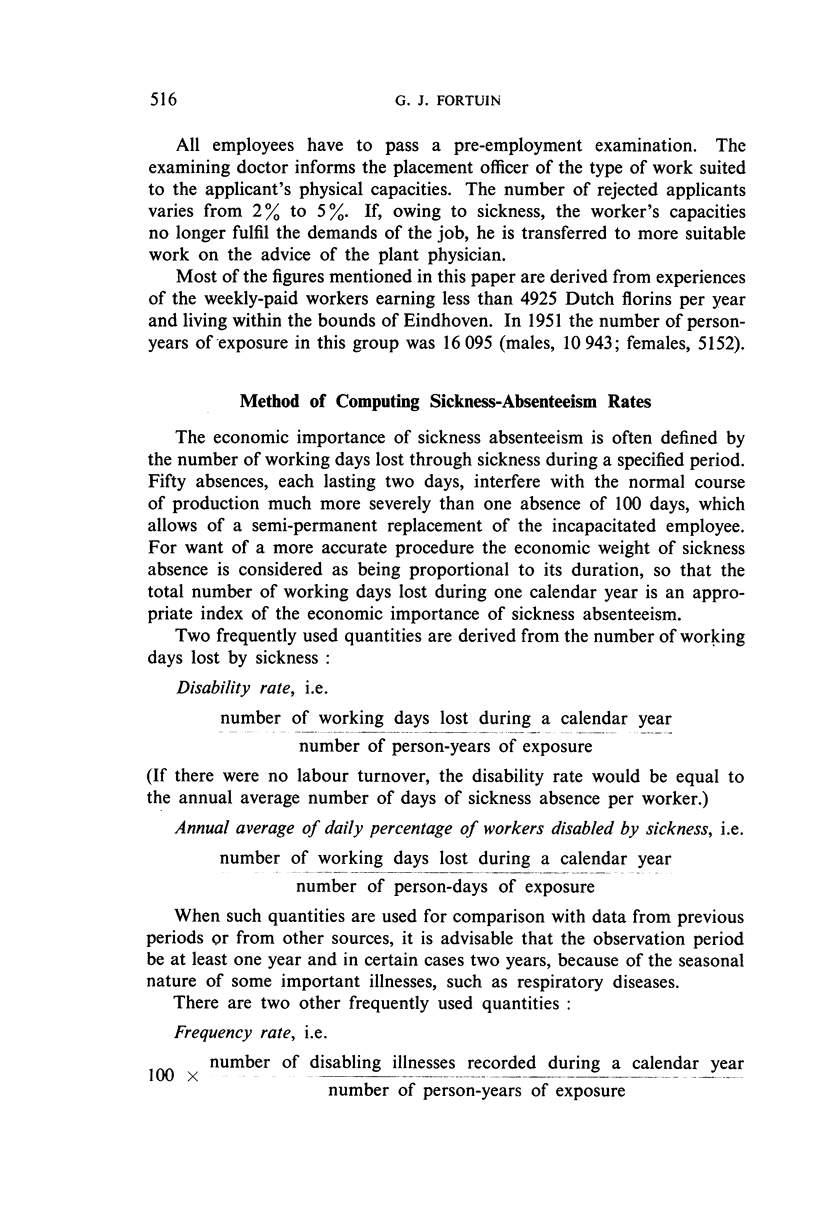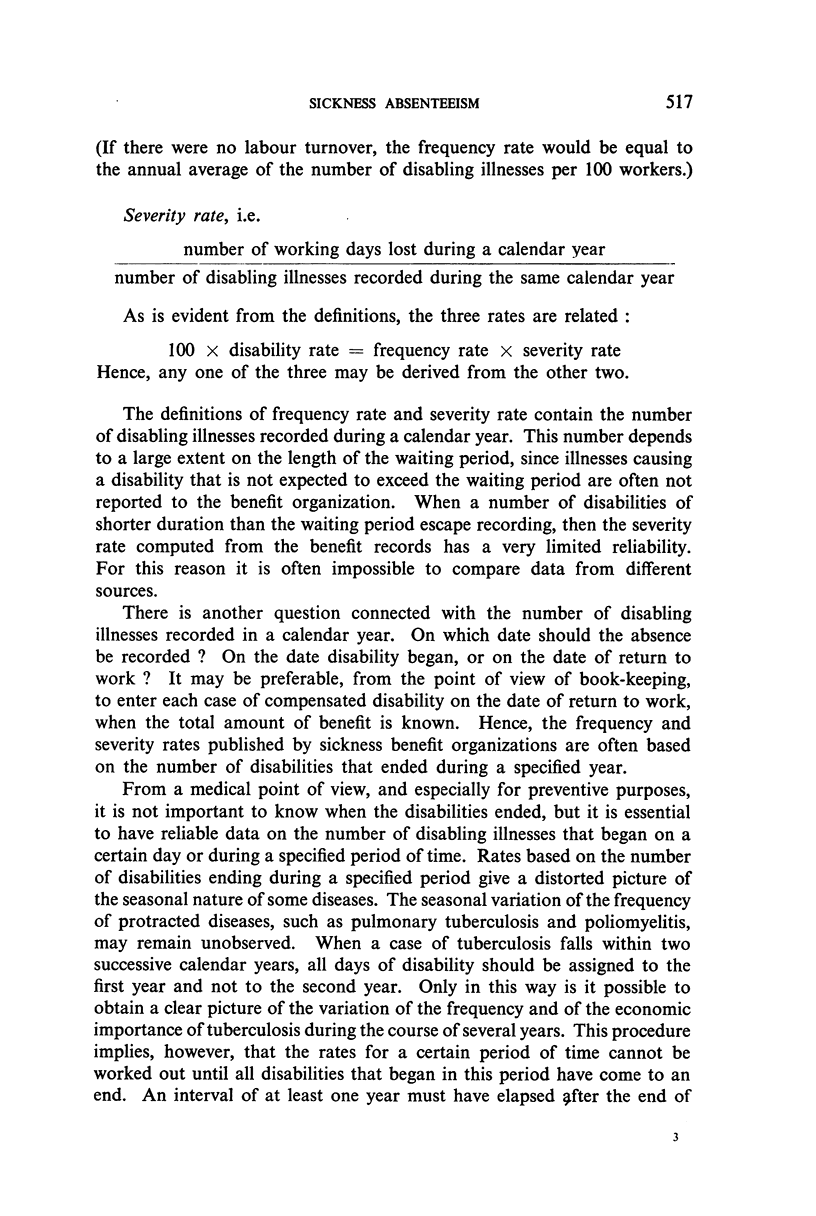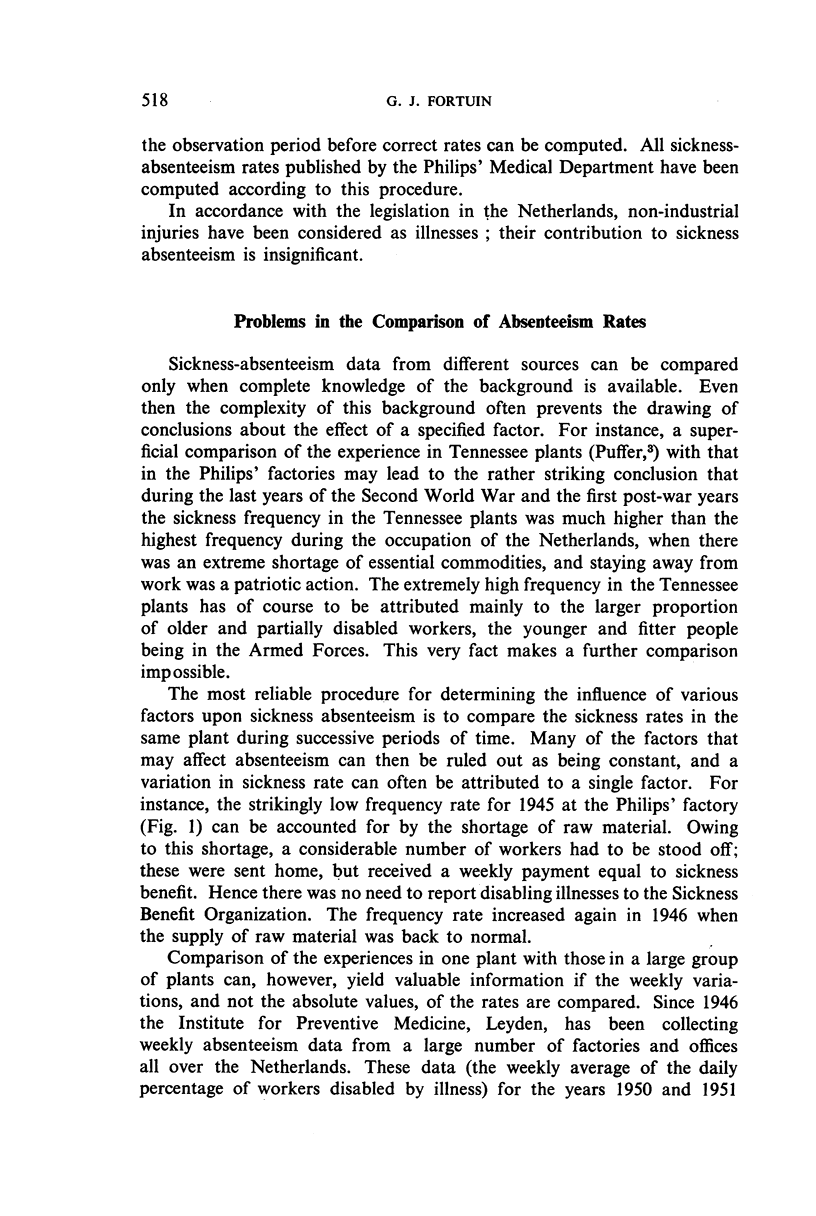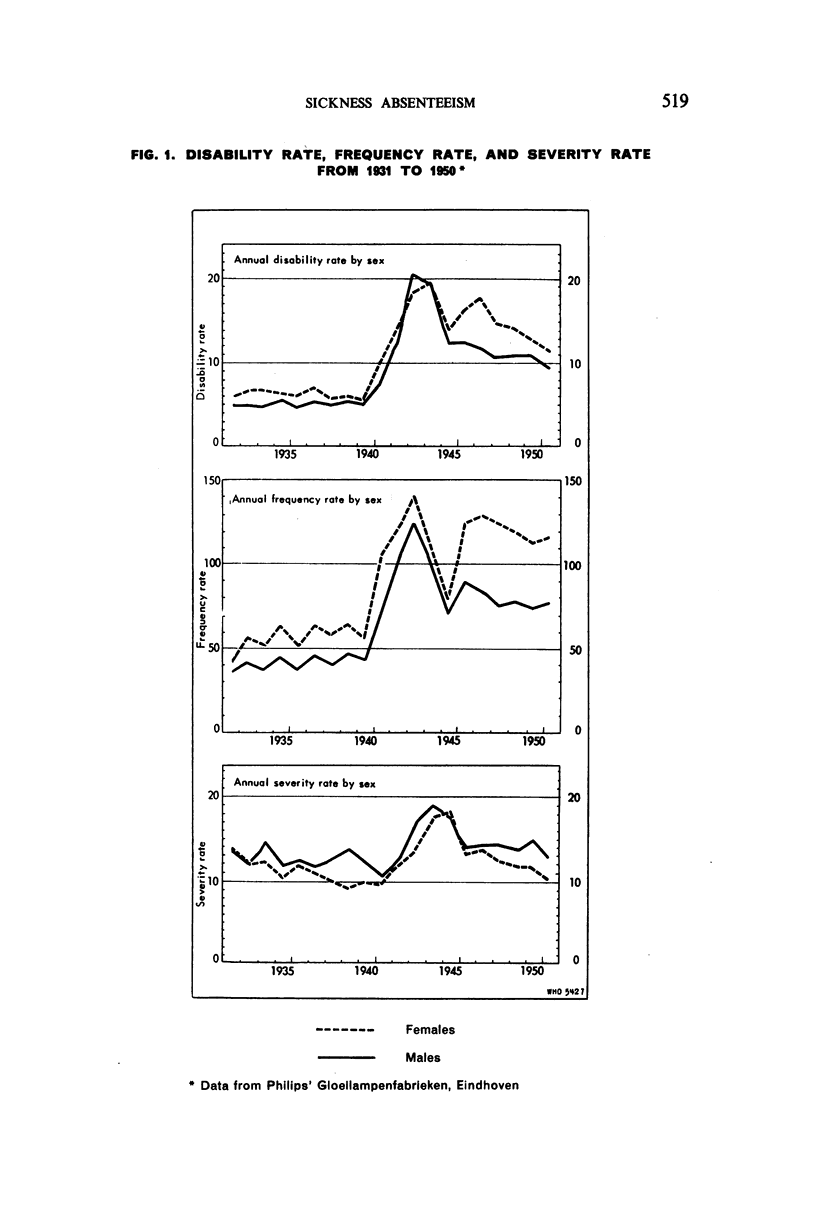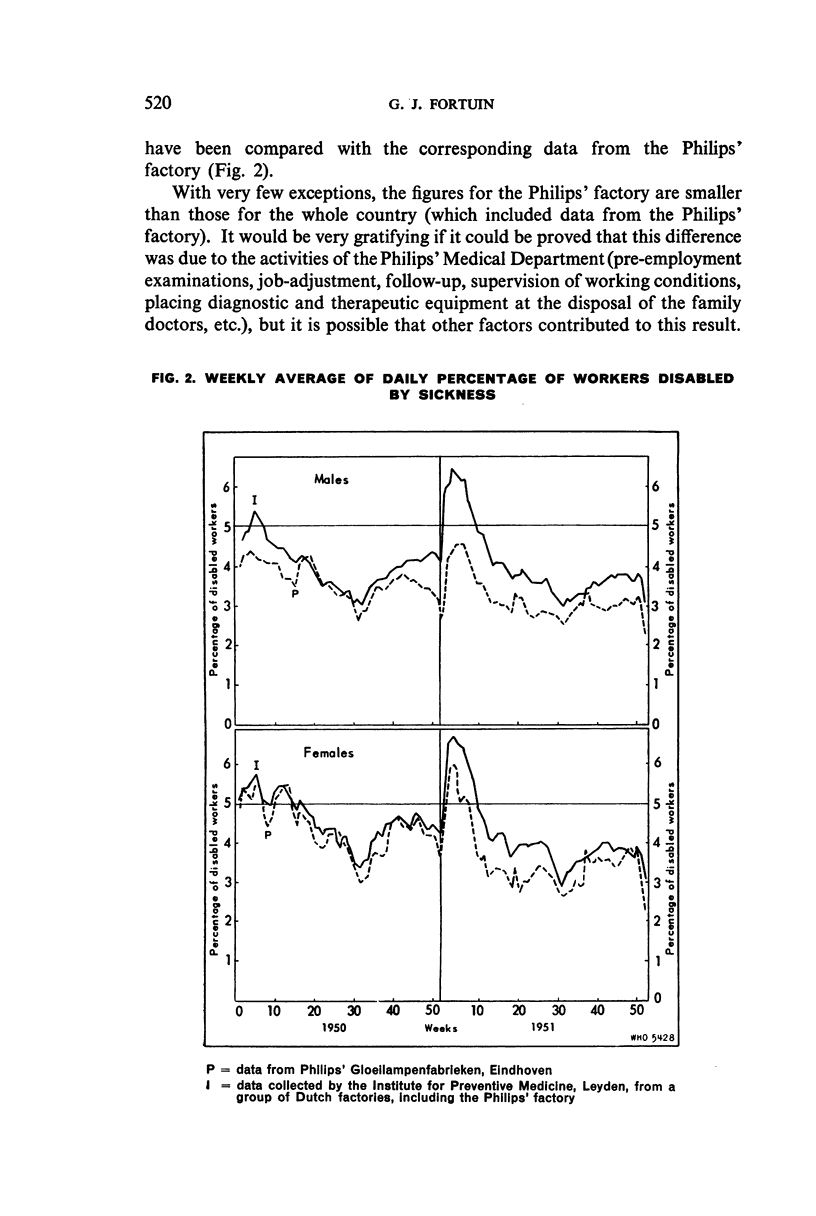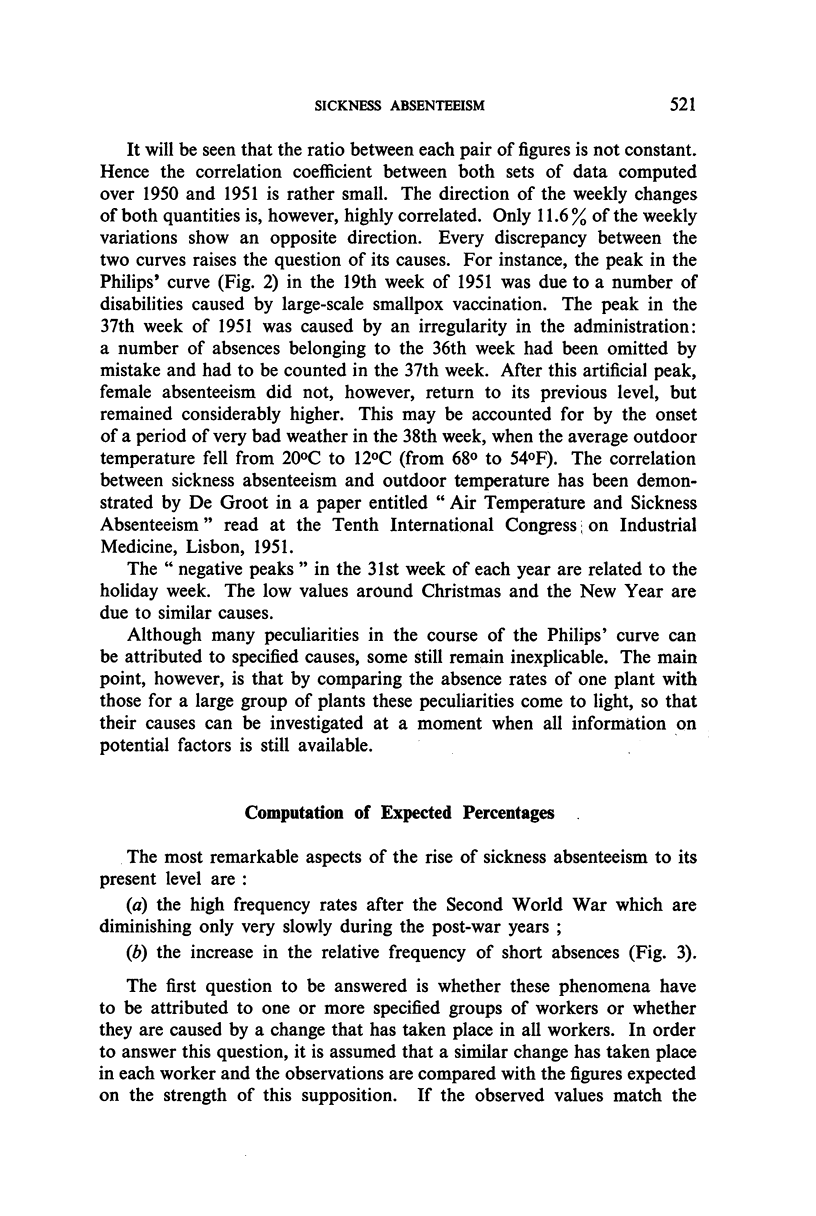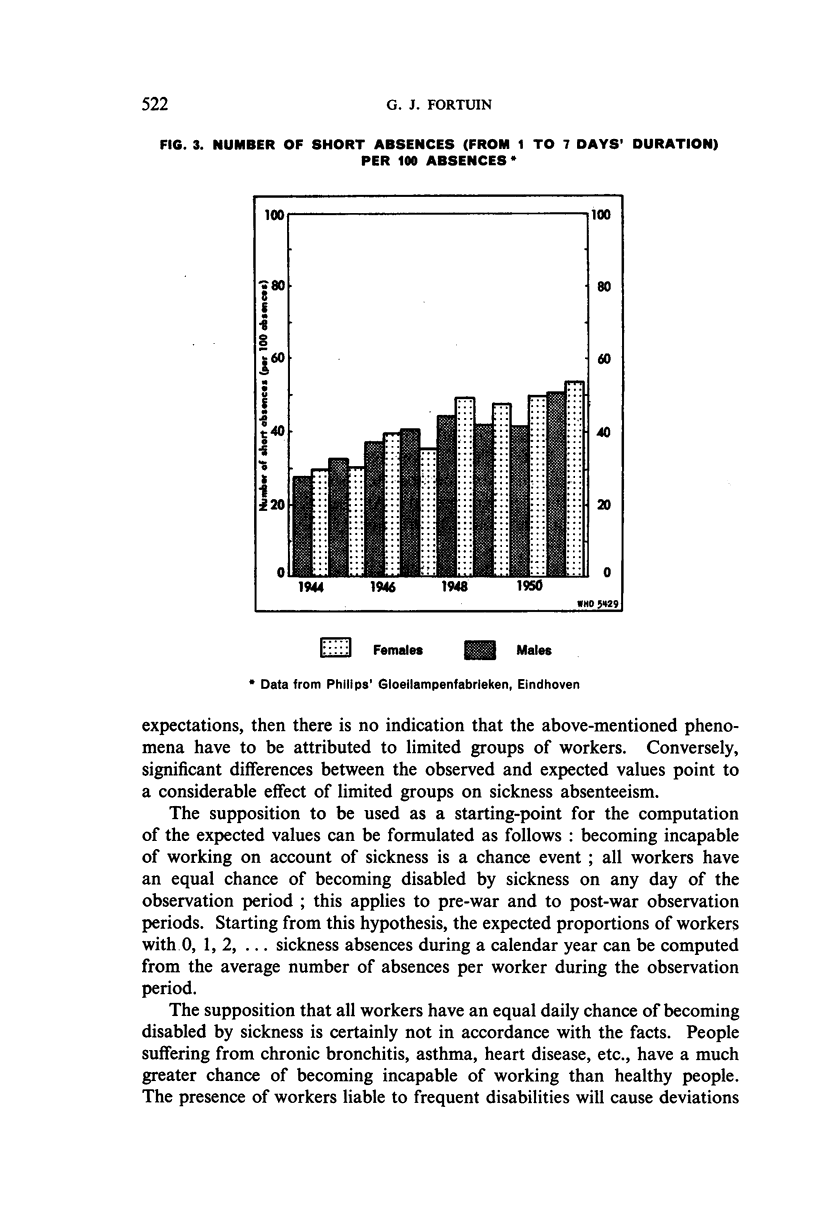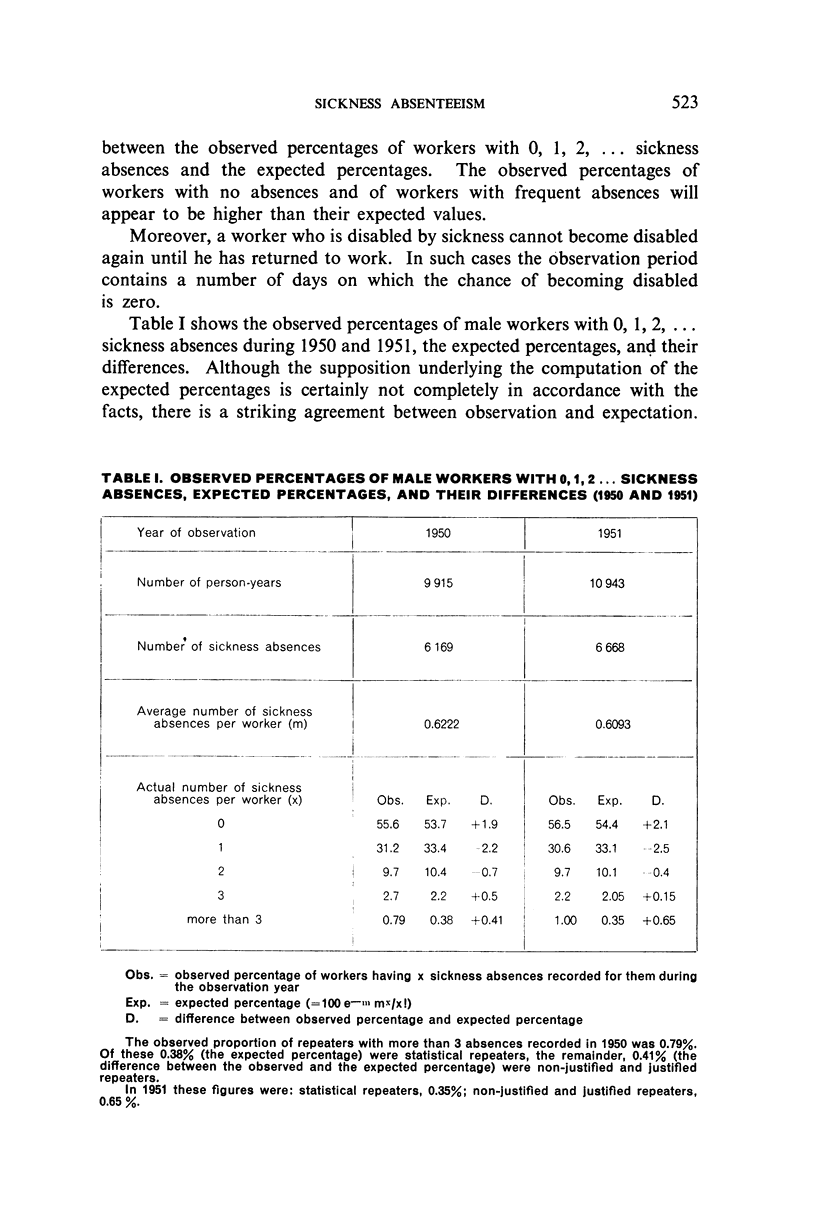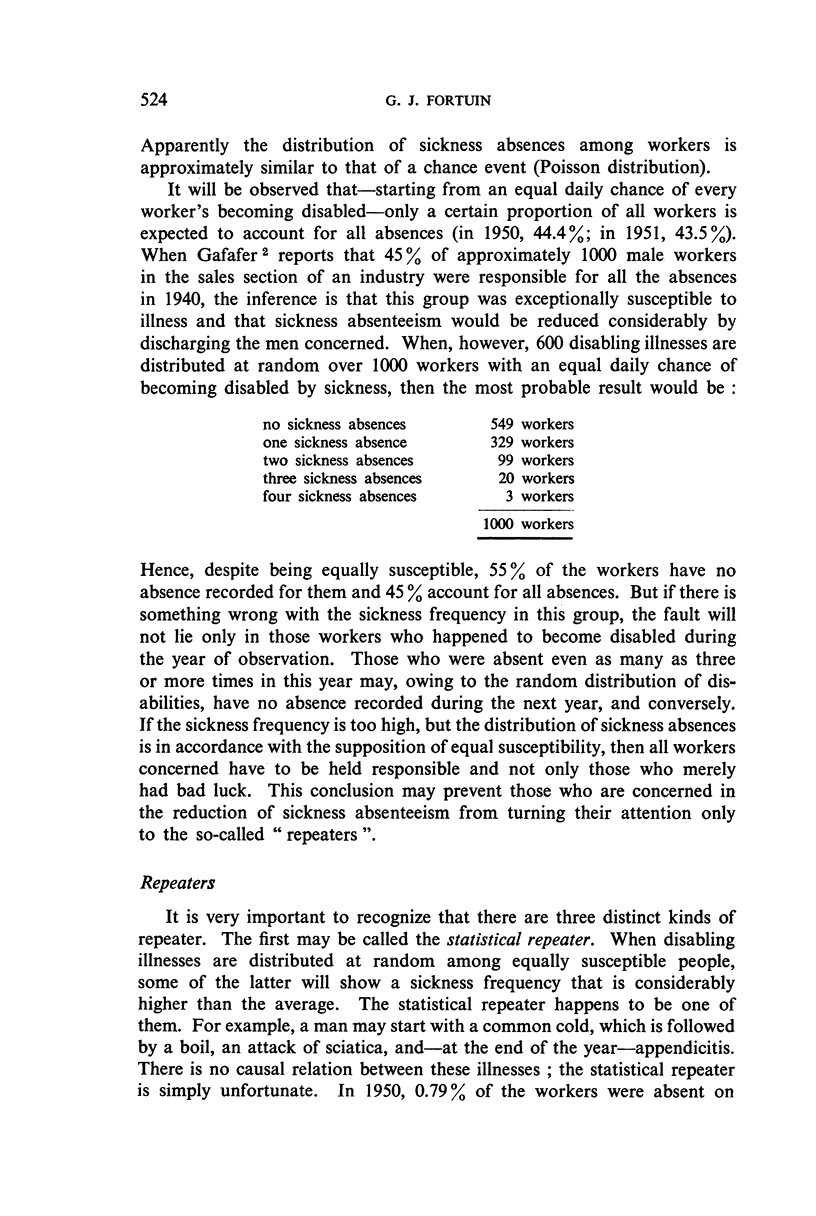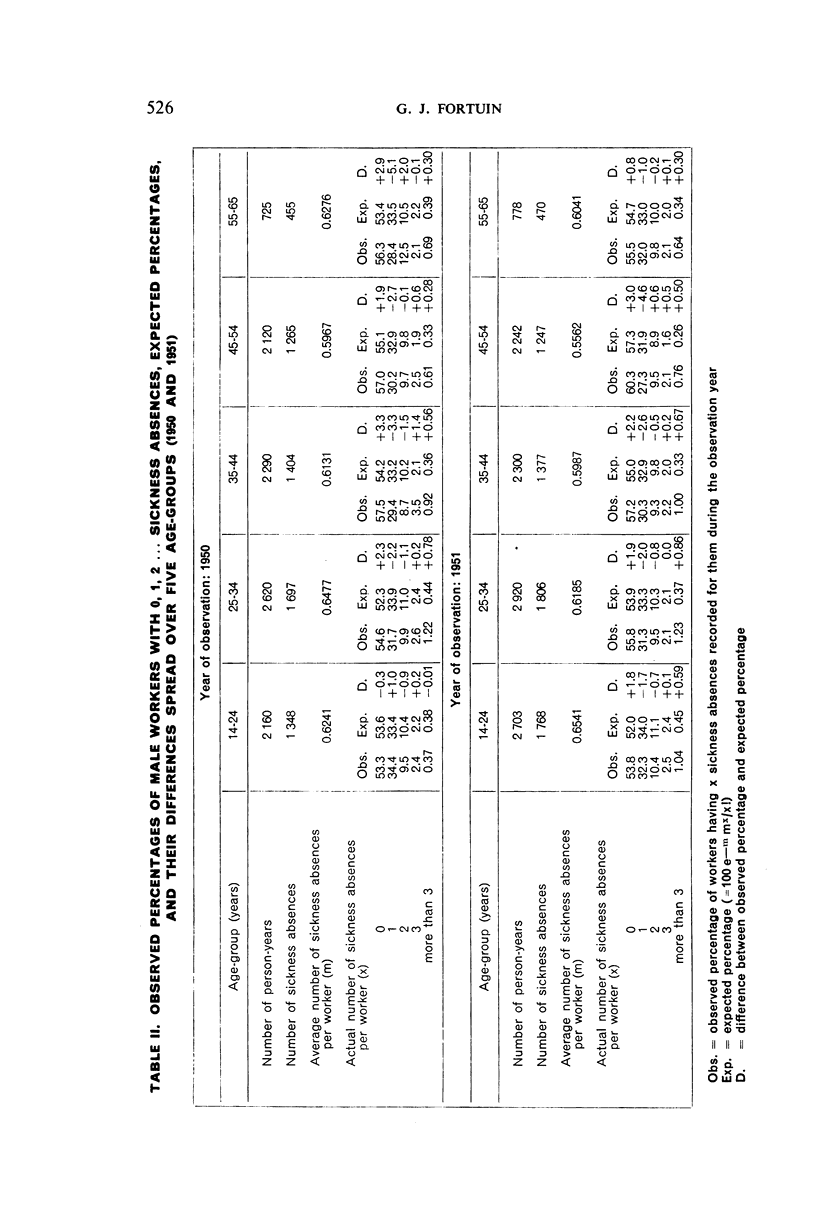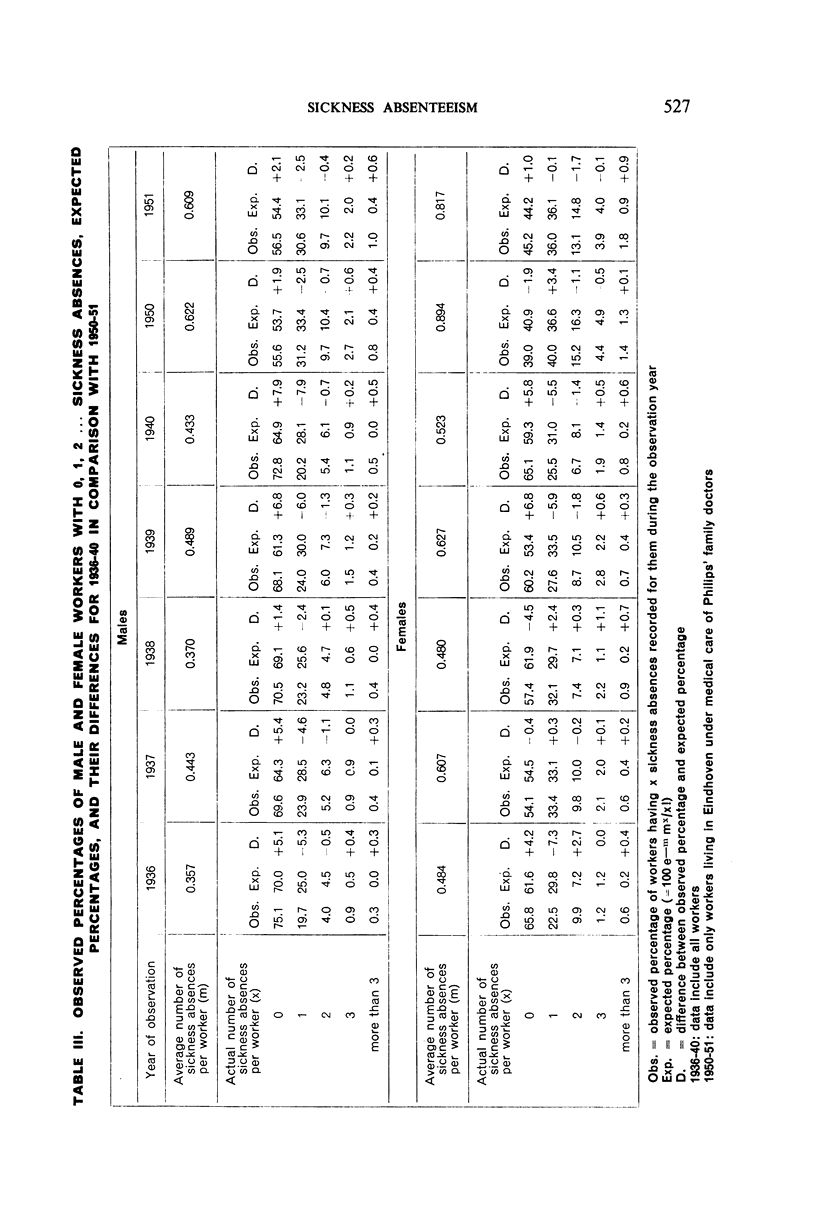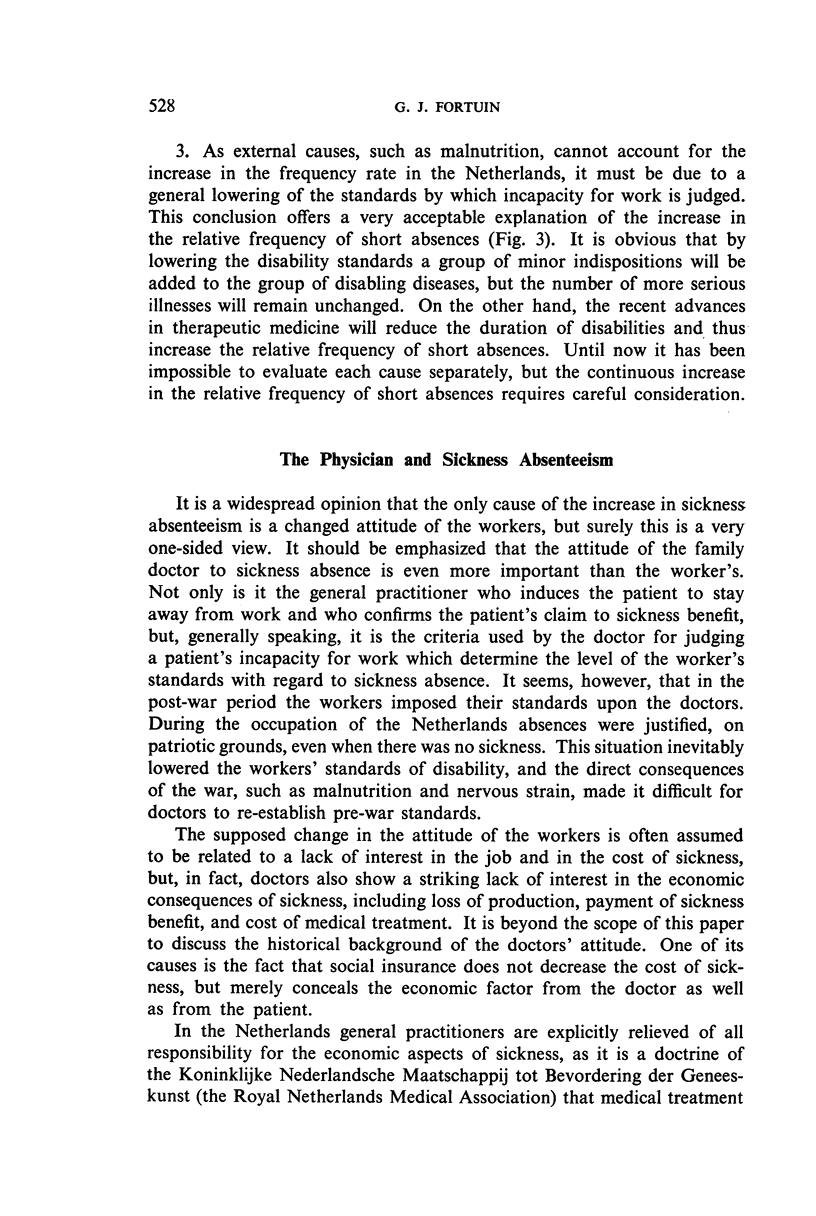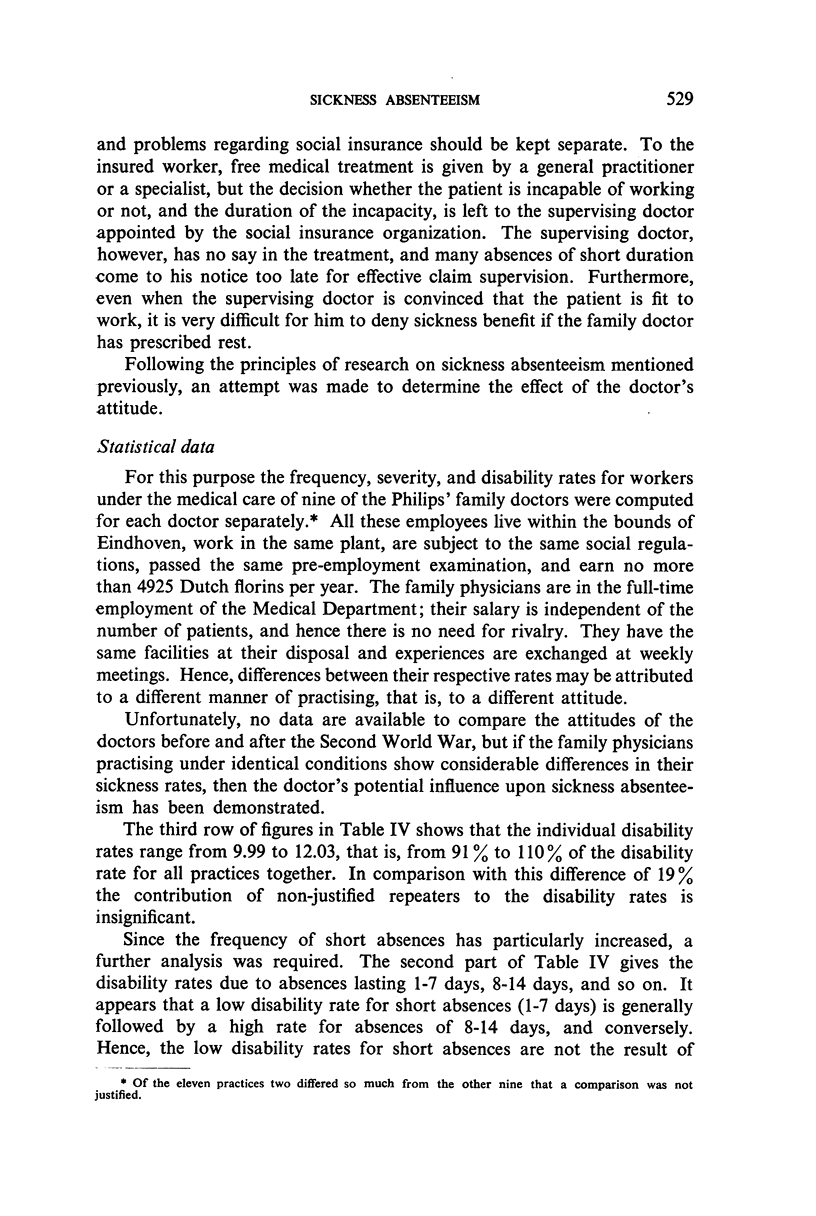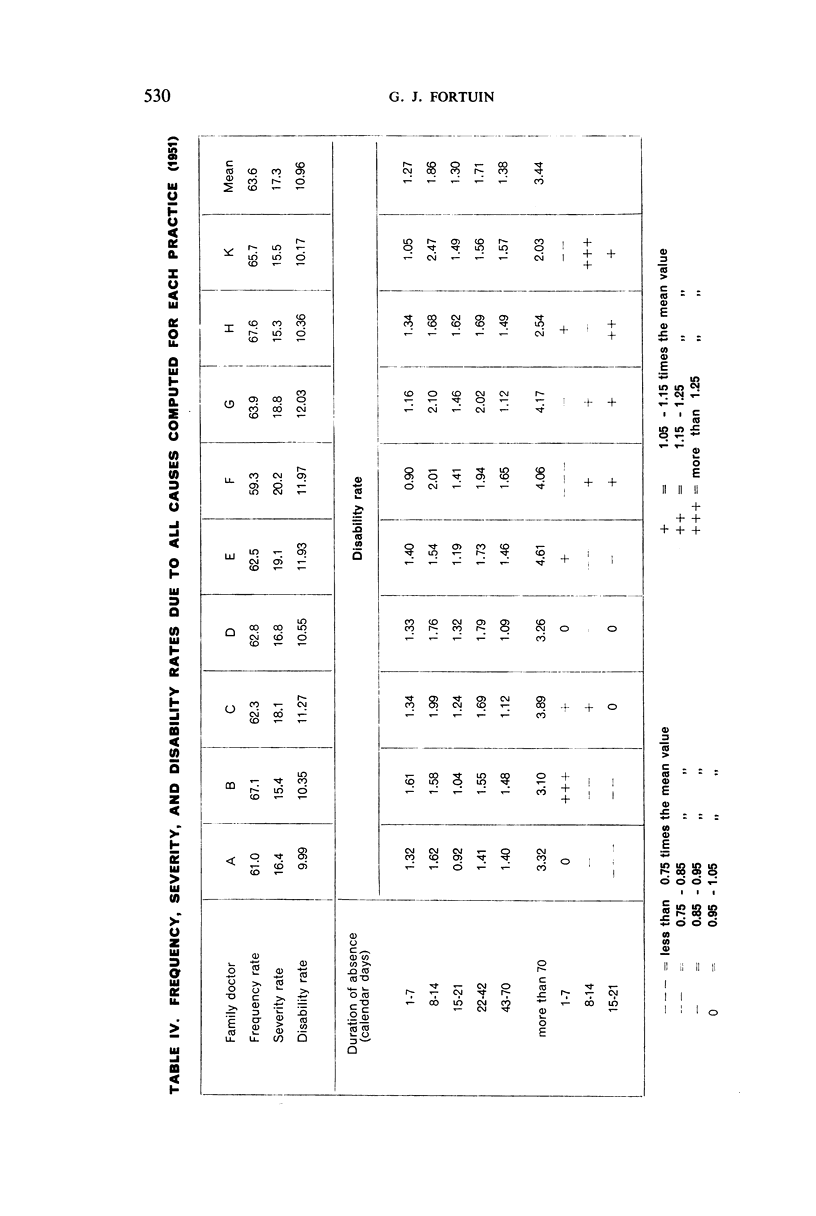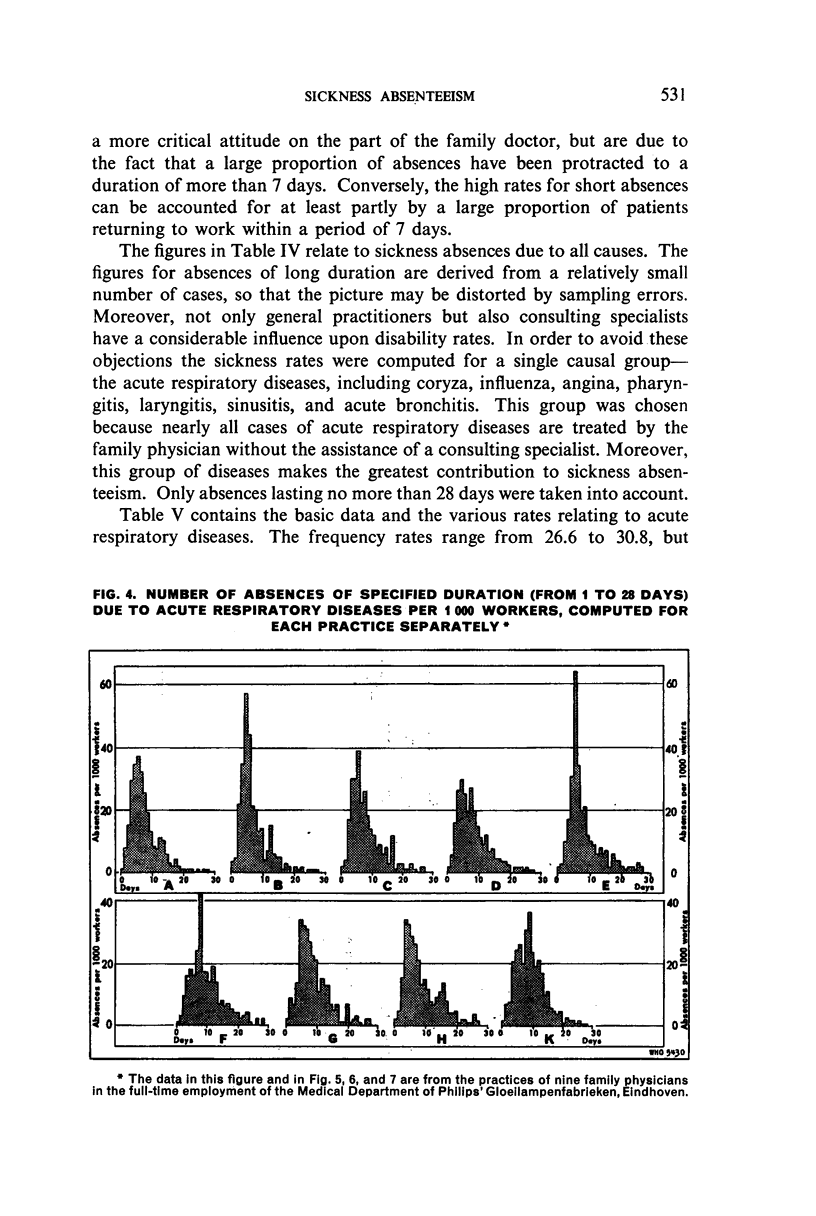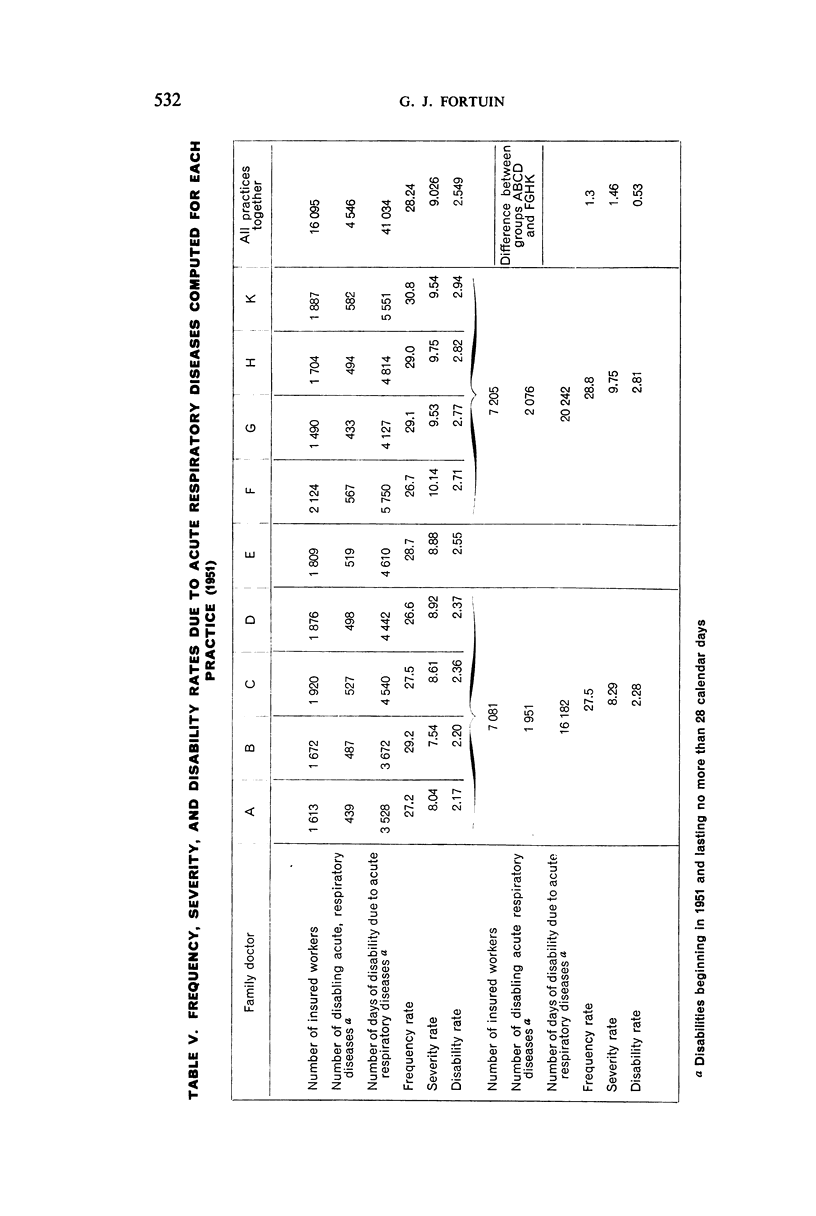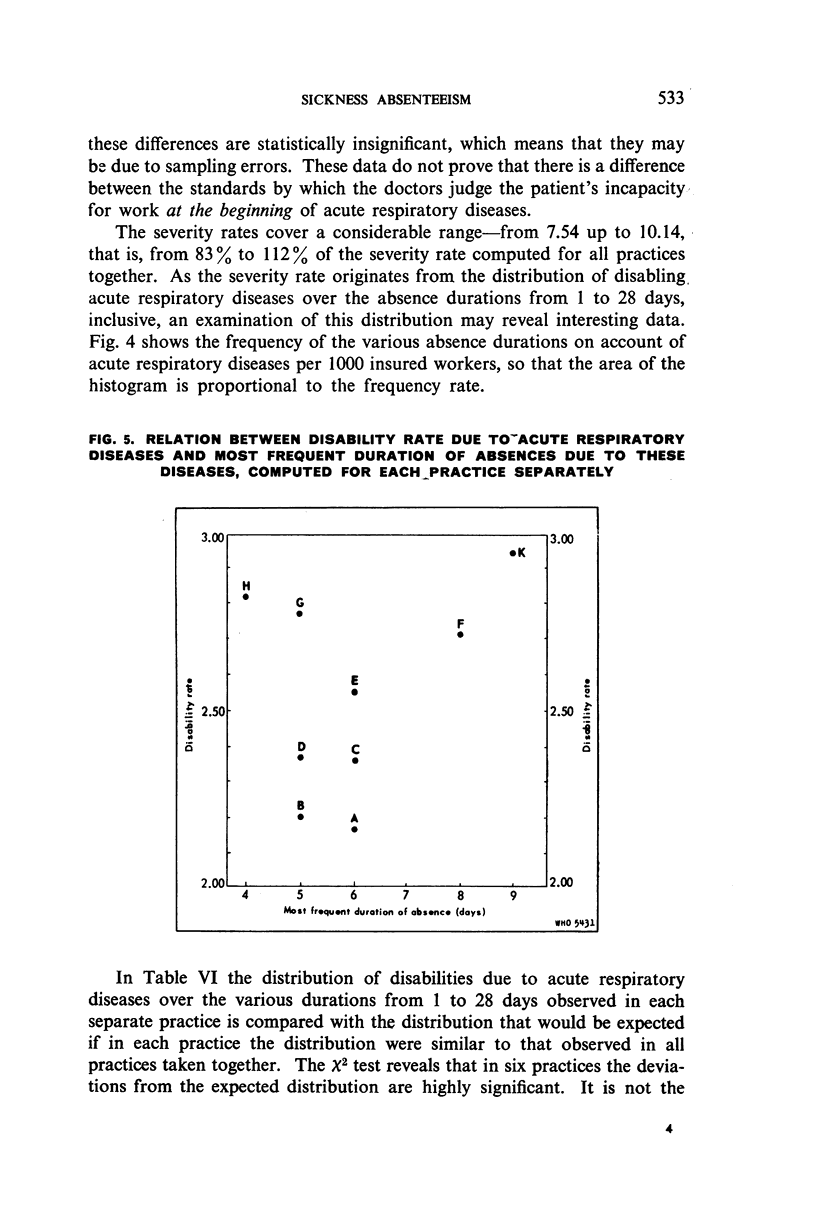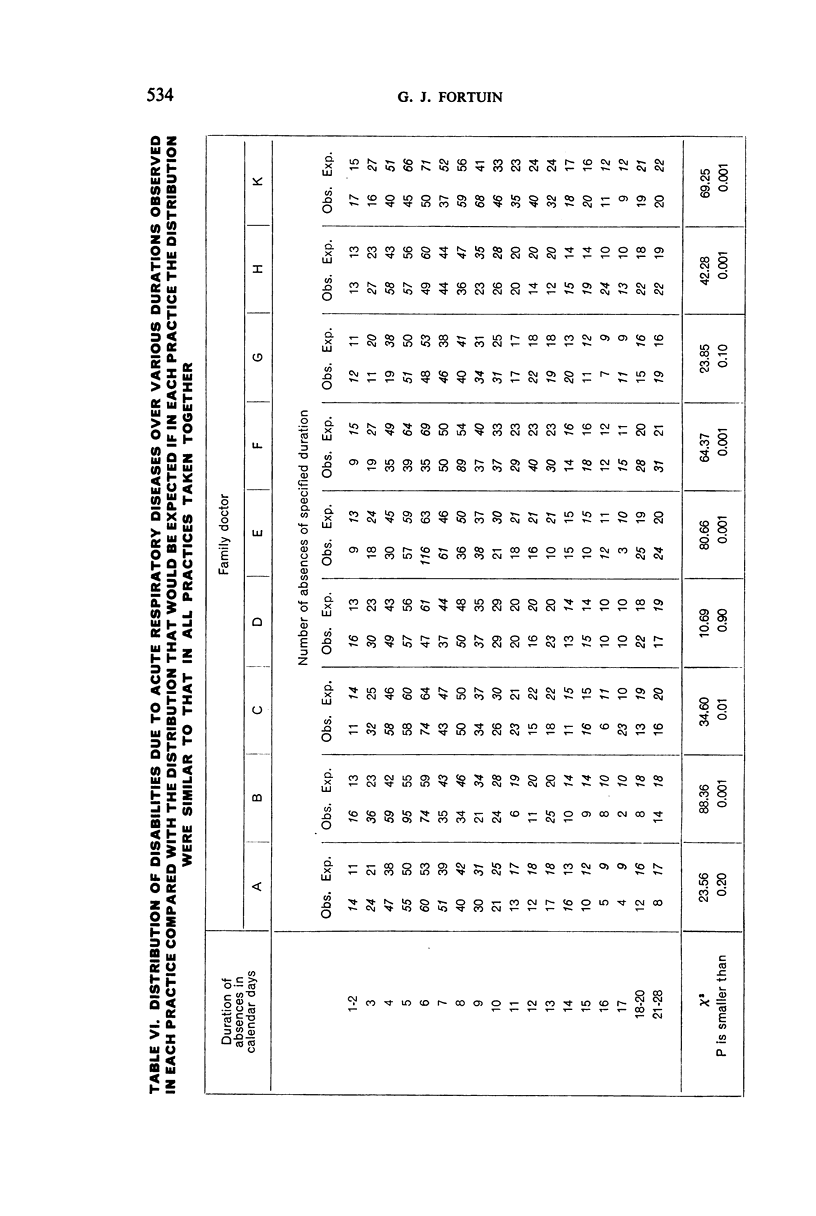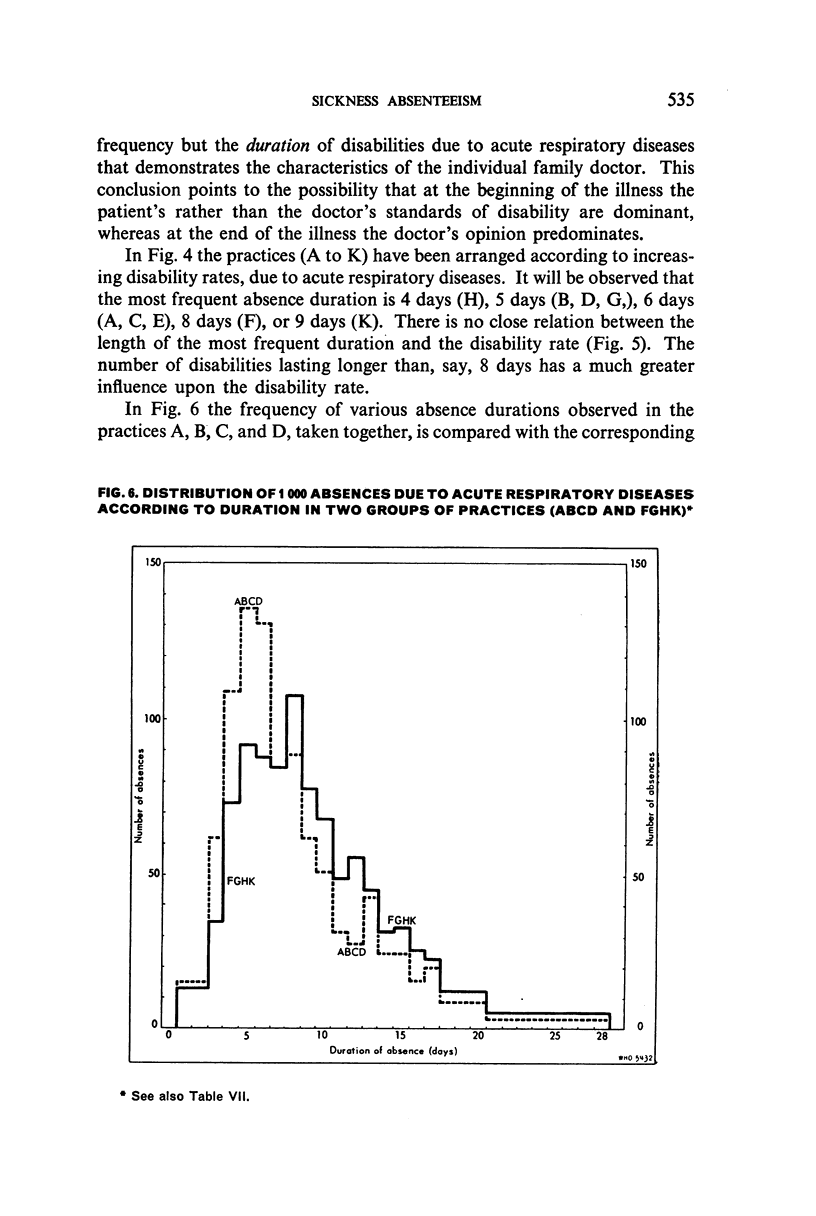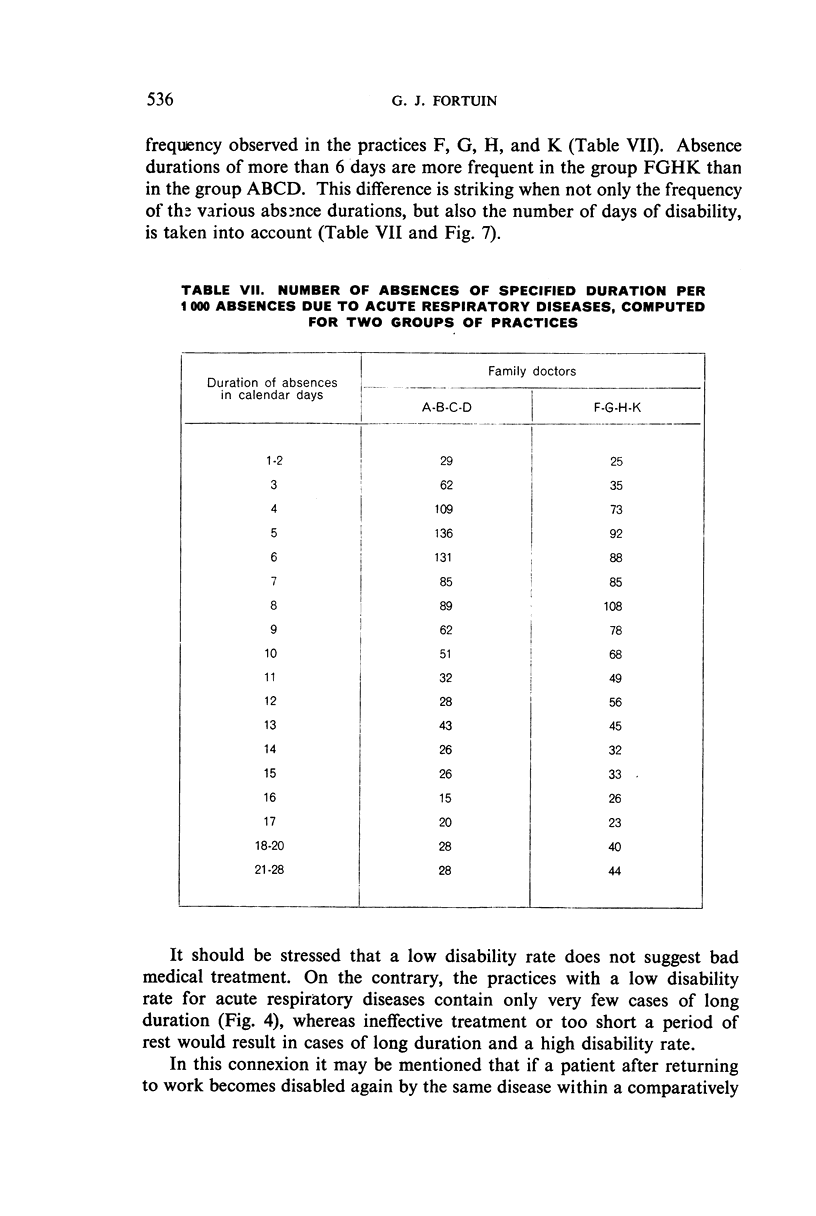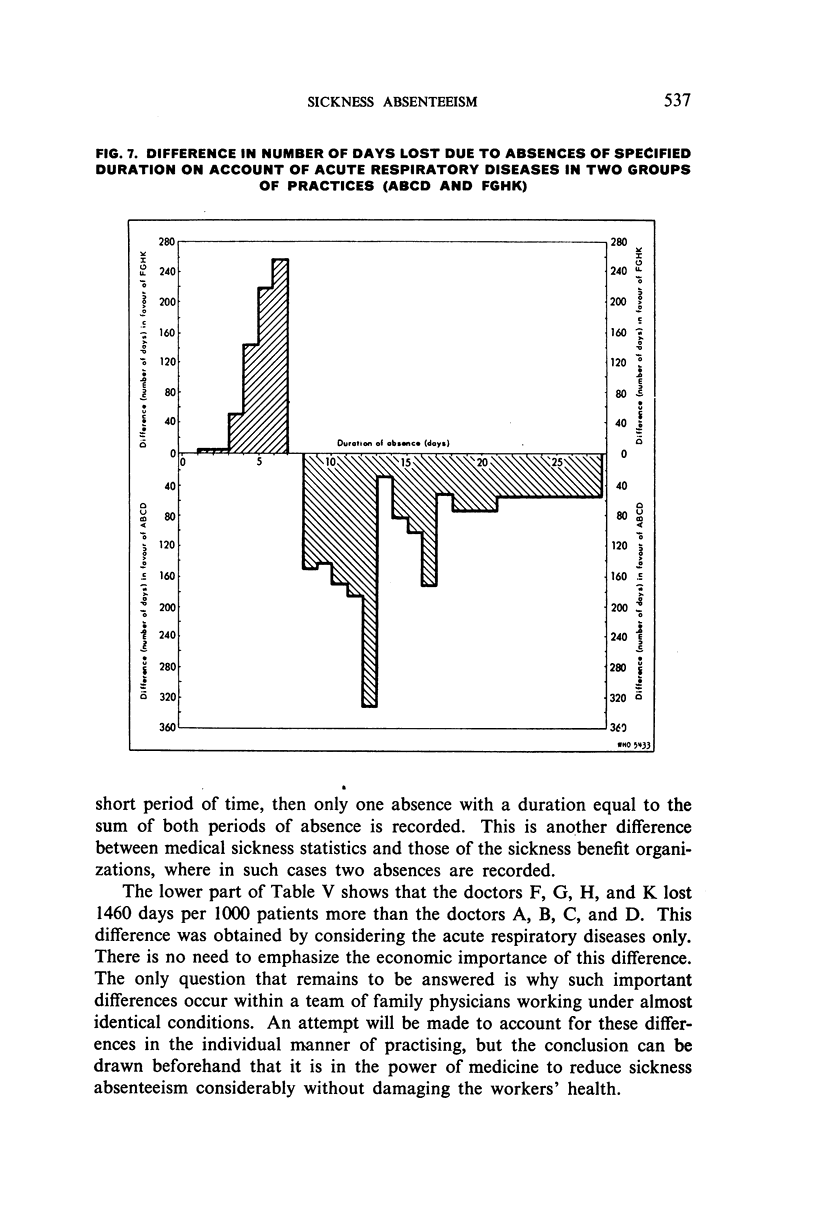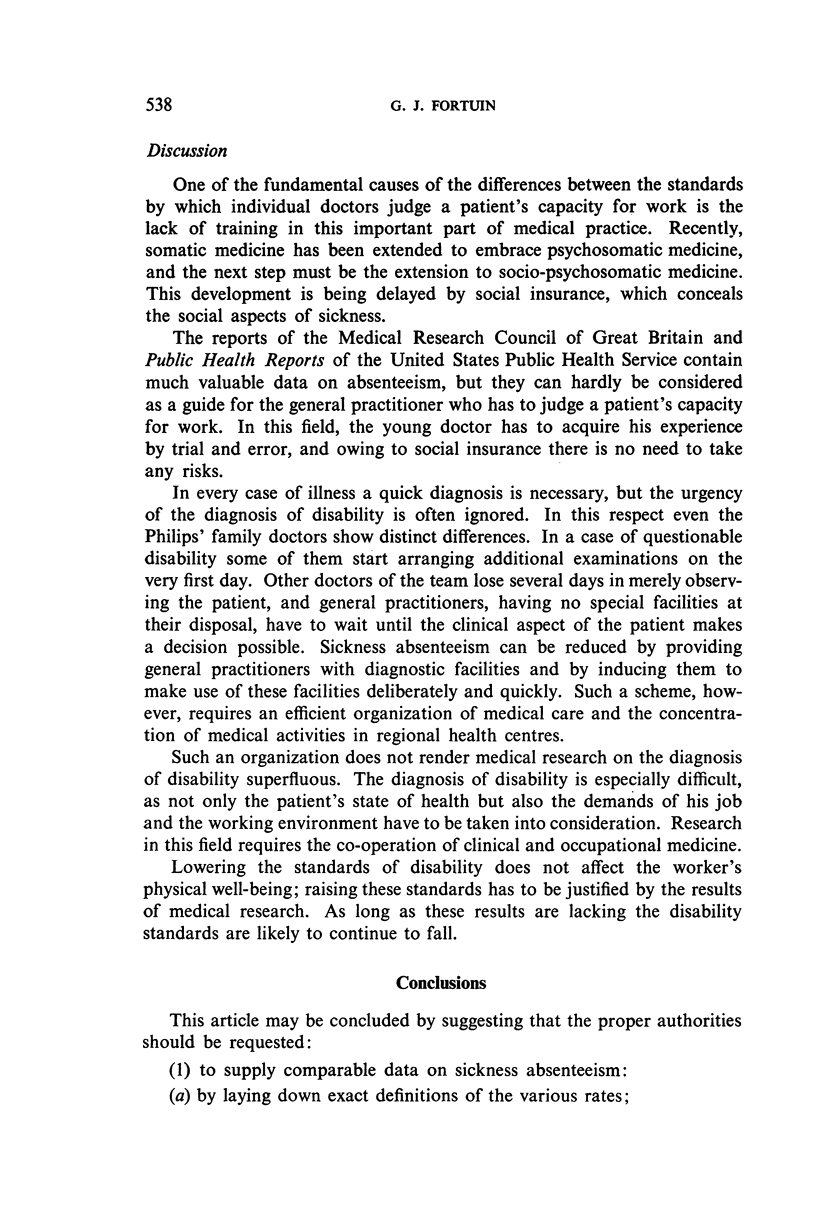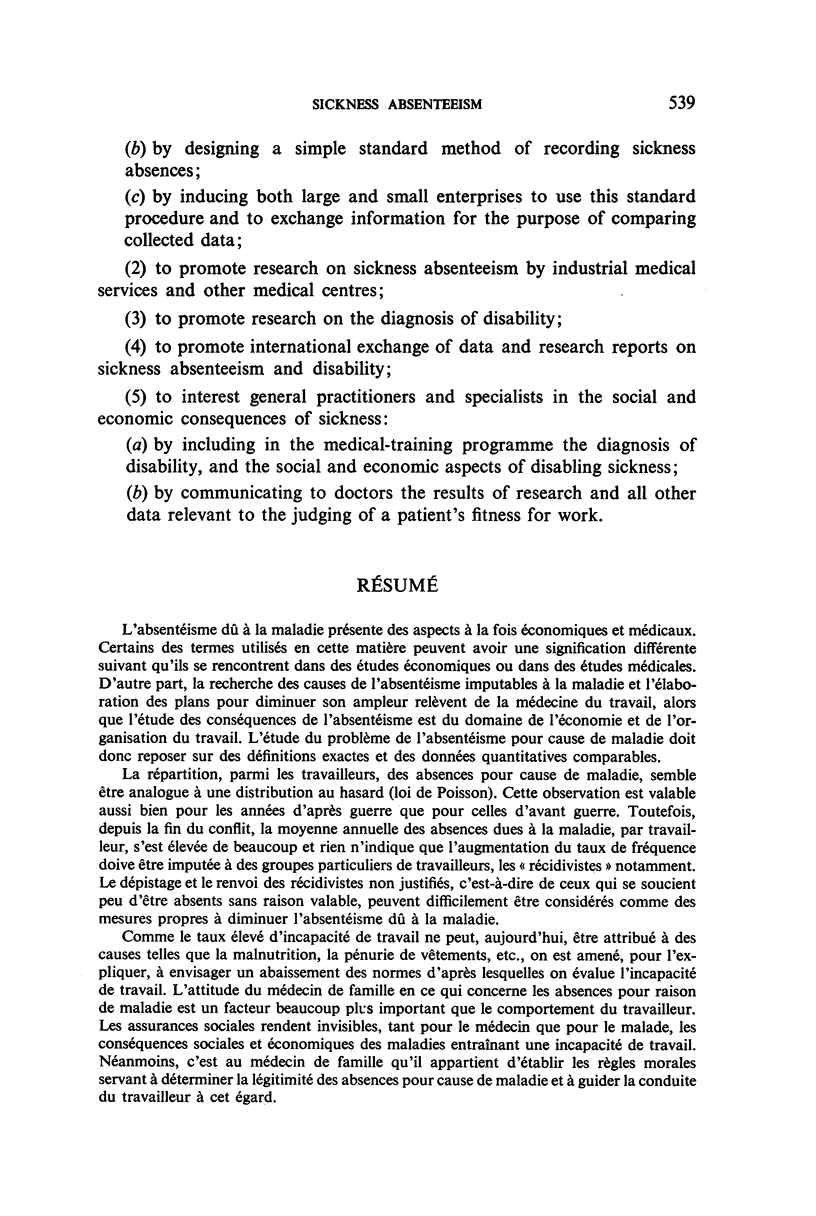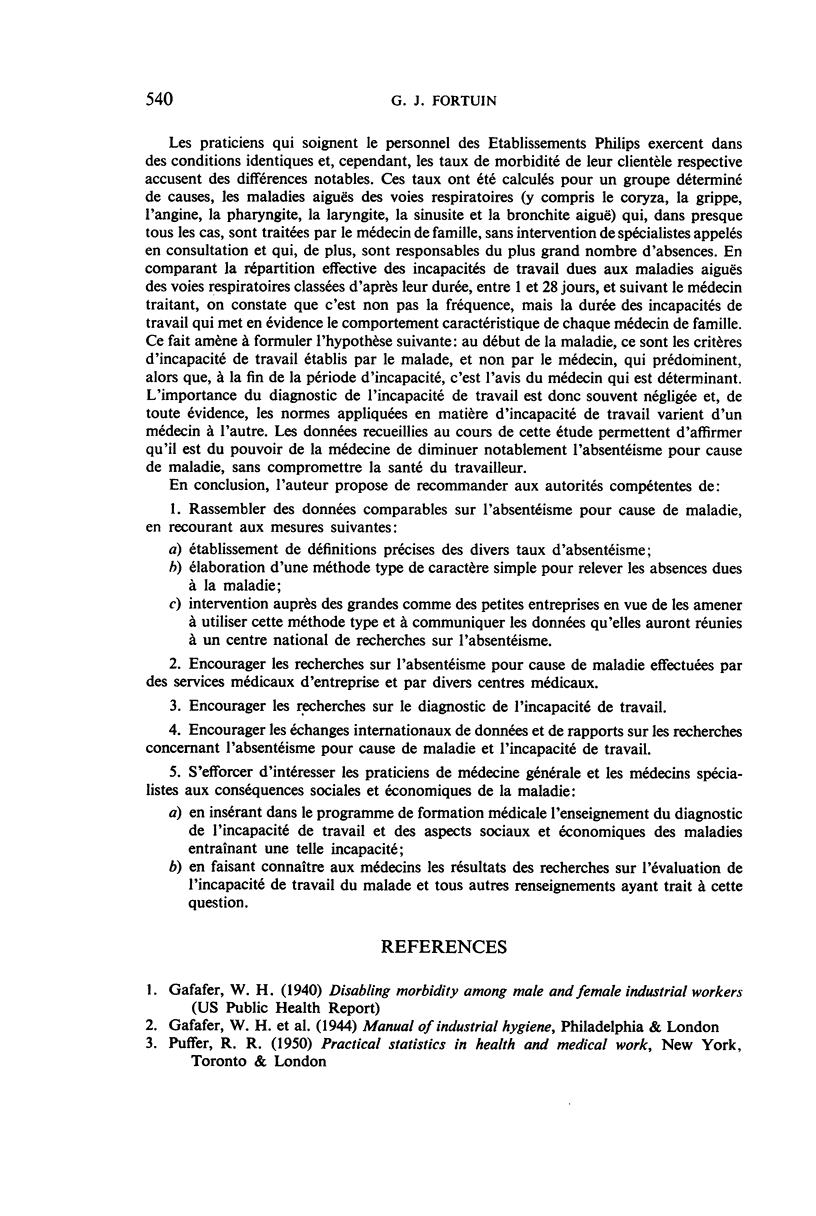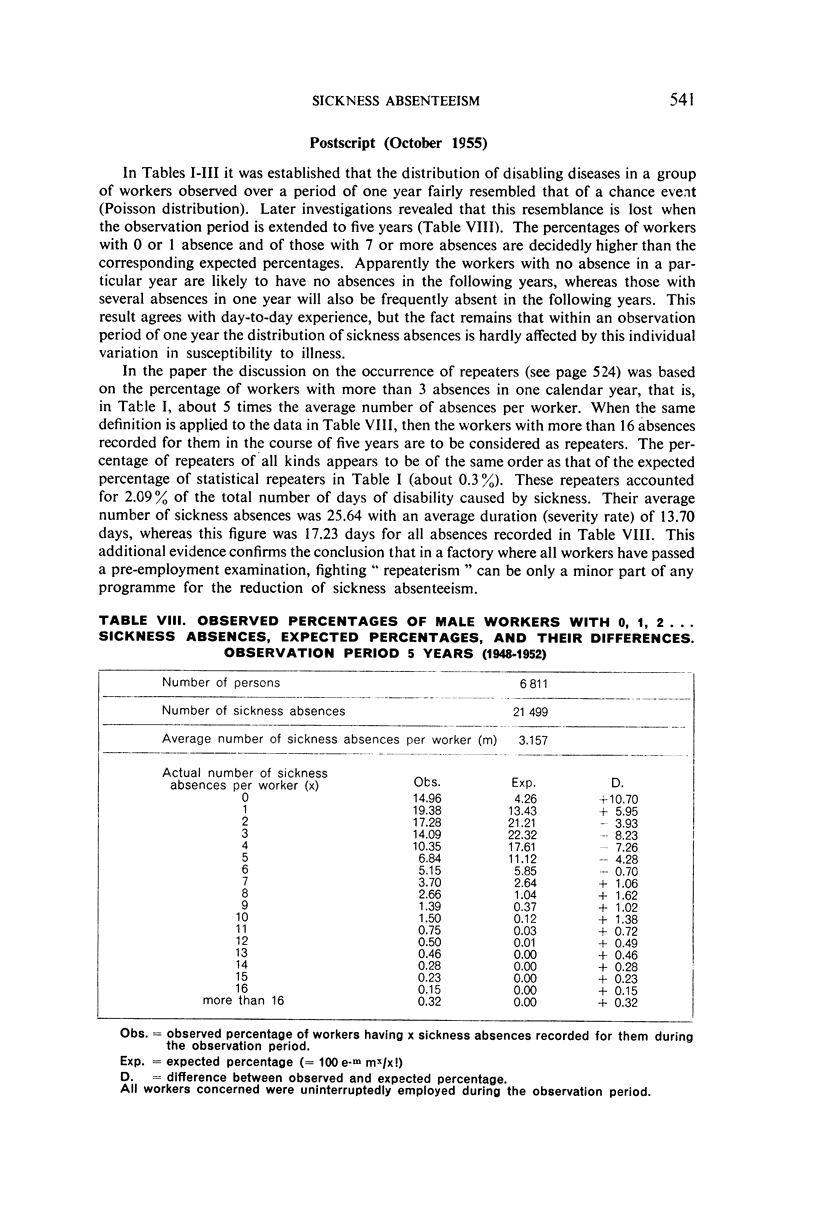Abstract
In this paper, sickness statistics are discussed, with special reference to the differences between medical statistics and those of the sickness benefit organizations. Special attention is paid to the comparability of data from different sources.
The distribution of sickness absence among workers appears to be approximately similar to that of a chance event (Poisson distribution). This conclusion applies to pre-war years as well as to the post-war period. Although in the latter period the annual average of sickness absences per worker is much greater, there are no indications that the increase in the frequency rate has to be attributed to specified groups of workers; all workers are equally responsible.
The high disability rate cannot be accounted for today by causes such as malnutrition, so the phenomenon must be due to a lowering of the standards by which incapacity for work is judged. Since it is the family physician who sets these standards for the worker, it follows that it is he who is largely responsible for the increased rate of sickness absenteeism. The fact that social insurance has concealed the economic consequences of disabling illnesses from the doctor as well as from the patient is one of the reasons why physicians have tended to relax their disability standards.
Family physicians practising under favourable and almost identical conditions within the framework of an industrial health centre may, nevertheless, show considerable differences in attitude. When disability rates were computed separately for the practices of nine general practitioners in the full-time employment of the Medical Department of Philips' Gloeilampenfabrieken, Eindhoven, Netherlands, the results showed that there was no common opinion among the doctors with regard to standards of disability. A closer examination of the available data allows the conclusion to be drawn that it is in the power of medicine to reduce sickness absenteeism substantially without damaging the worker's health.
Finally, some proposals are made for promoting research on sickness absenteeism and on the diagnosis of disability.
Full text
PDF